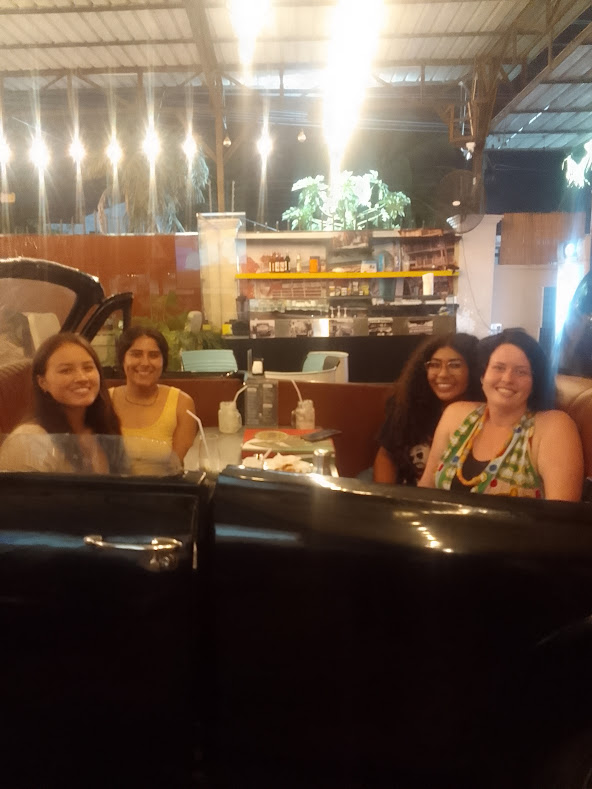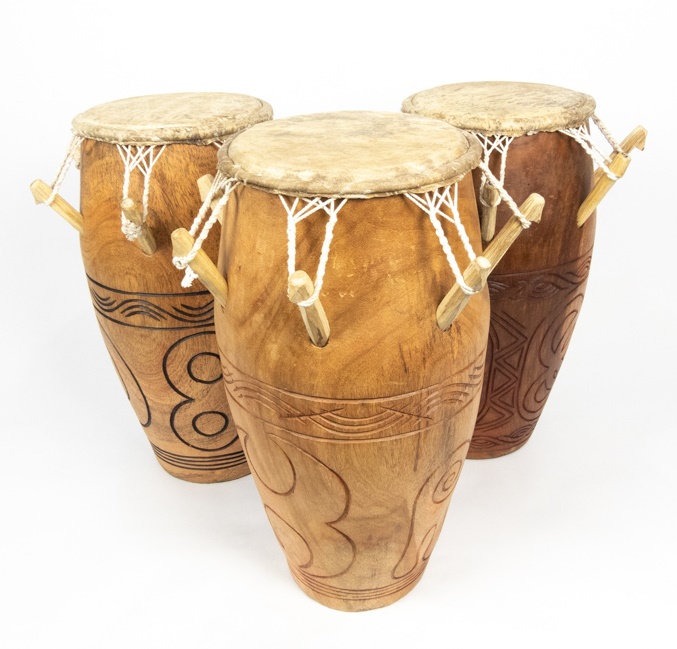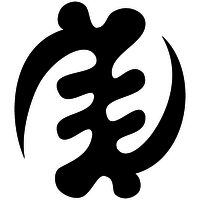
Sabrina Blais never intended to go Ghana. If you ask this young woman how she got there, plan on learning about an unexpected odyssey attesting to life’s curiosities. Sabrina didn’t have much time prepare for a trip that took her far from her home in Santa Rosa, California. She knew little about the Ghanaian culture and even less about the small nation’s history or the role that it played in West Africa.
Her studies at Sonoma State University are as reflective of this young woman’s talent and interests as they are also reflective of the environment where she grew up—Occidental, CA, Santa Rosa, CA and Sebastopol, CA. This region of the United States is famous for groves of old Redwood trees, rolling hills traversing vineyards and nature preserves under an ever present sun, intermittently masked by fog. Come fog or sun, the not-so-hidden beauty is everywhere in what is known as—wine country.
Sabrina is working concurrently on two Bachelor’s Degrees, in biochemistry and theatre arts; the two disciplines together are an unmistakable confluence of art and science. Few college study abroad programs offer both disciplines. Initially, she applied to go to Australia, but the program was cancelled. Ghana turned out to be one of the only other locations in the world offering the duo discipline of biochemistry and theatre arts.

“I actually got into the program,” she said. “I was very busy with school so I didn’t have much time to do preparation. I said, ‘Hey, cool, I’m going to Ghana and I went in cold.’”
Her immersion in the Ghanaian culture created its own rhythm, sort of learning fast and learning slow. Sabrina came to know the Ghanaian people simply by being with them on a daily basis—jumping into their way of life came fast, but what she learned was decidedly slow and thoughtful. “I hung out with Ghanaian people and came to know them,” she said. Soon she experienced the hospitality of the people, the generosity and warmth they exhibited at social gatherings; everyone gathering as if they were family, but most exhilarating of all, she learned how to drum.
Now for learning fast. Playing the Kpanlogo requires rapid reflexes and fast moving hands. No ordinary drum, the Kpanlogo is pronounced "PAHN-loh-goh"). Sabrina notes the pronunciation as Pan-logo. “It’s a P-sound, but you really pop it.” The Kpanlogo is a wooden barrel drum that is played with two hands. Its drumhead is usually made of rawhide. Rotund in shape, the outside of the drum might have cymbals, but it is always carved with designs that are rich with texture symbolism. The Kpanlogo has many designs, all of which have specific meanings. One design that is the most common is defined as gye nyame, which means the supremacy of God.

Kpanlogo music, the steady thrumming created by two fast hands, is also a form of dance. The Kpanlogo Ghanaian dance form is historically associated with the Ga ethnic group from the Greater Accra Region in South Ghana. Often performed low to the ground, with bent knees and bent back, the movement is frequently sexually suggestive. Accounts of police seizing musical instruments and detaining performers in its early days have been well documented. Kpanlogo dance easily resembles American Funk. Remember the Get down, Get down in the Funky Get Down of the 1970s and 1980s? Kpanlogo dance is that sexy.
Sabrina describes Kpanlogo dance movement as similar to the shape of the Kpanlogo drum. “Just like moving the drum forward and back, then you break off into holding a ball in your hands. Using the ball to make your body make a shape. You don’t actually use a ball but, you use your body to act like you’re holding a ball.”
Having a background in music helped Sabrina learn how to drum. She has played the cello since she was in Middle School and later played the instrument in the orchestra at Analy High School in Sebastopol, CA. While she has a natural bent toward music, she didn’t have a background in dance. In Ghana, however, she began taking dance classes. She describes the different kinds of dances as Agbadza, Kpatsa, Damba, and, of course, Kpanlogo.
Agbadza is often deemed to be a war dance of the Ewe people of Ghana, but it is also a popular recreational form of dance. Sabrina said, “Agbadza is like a war dance and it involves swords, step in and step out and step cross to the side. And then you do some fancy footwork.”
Kpatsa, the principal traditional entertainment music and dance of Dangbe community of Ghana, is sometimes linked with puberty rites and rituals, but is also said to have multiple, complex social roles. Take dwarfs. Sabrina describes the dance going forward, where you walk forward, and walk back. “Stylized, fancy,” she said. “You’re imitating mythical African dwarfs.”
Now Damba, among the Mandingos of Western Africa or among people from the upper Niger Valley, means a big dance. “Damba is a dance in a circle,” Sabrina notes. “A communal dance, another war dance, but everyone dances around in a circle then people break off. It represents fighting.”
All of the dances have one thing in common: all of the dances are done to the rhythmic energy of the drums. Four or five different people are usually playing the drums—that is what the dancers are responding to—lots of drums. The drumming and the dancing are inextricably linked to the drums. According to Sabrina, “The instruments, the music, and the dance are one.”
The instruments, notably the drums, along with the music and the dance are highly reflective of the Ghanaian people. Friendly, welcoming and generous, the needs of the many are more important or greater than the needs of the individual. The “oneness” of the people is celebrated in more than the rhythmic drumming and dance, a communal caring is also present during mealtime. Sabrina calls it “the politeness when sharing food.” She observed that “when a lot of people are eating together, you let other people take from your bowl and other people will let you take from their bowls.”
There are many traditional dishes. Fufu and banku accompany most meals. Fufu is made from cassava, whereas banku is made from maize that is ground and fermented to make corndoe. Fufu originated as an Ashanti dish and is often is eaten with stews of meat, fish, or vegetables, or dipped into sauces. Banku is derived from the Ewe culture, but everyone eats it. Both banku and fufu are staples in the Ghanaian culture that relies on the strength of being one, more evidence of gye nyame, the supremacy of God, and the power and mystique of the drums.
Religion is ingrained in the culture of Ghana. Christianity, Islam, and traditional African religions meld together into a stew, yet Juju-ism is a pervasive undercurrent that is deeply woven into the fabric of the Ghanaian people. Sabrina explains that Juju-ism is kept low, Juju is kept separate, but Juju curses are a thing that is taken very seriously, like voodoo. Stories abound about JuJu. “You go to the Juju man to get something you want and you get it,” Sabrina said. One story tells of the snake. “They give you a snake and when the snake dies, you die.”
Other JuJu stories explain that if you go to the JuJu man to get what you want, you will get it, but getting your wish fulfilled is not without sacrifice—the person you love most in the world will die. The Juju man leads you into a dark room, where there is only a mirror and a gun, and you see the person you love most in the world, and you shoot the mirror and that person dies. Wherever that person is, the person will die on the spot. And then you get what you want. The wish is often about getting rich or powerful, but there are all kinds of wishes and desires. “The Ghanaian people believe it hard,” Sabrina said.
The word Juju is derived from the French joujou, which literally means plaything.
JuJu defining a spiritual belief system incorporates objects, amulets and spells. While the term has been applied to many traditional African religions and especially to religious practice in West Africa, it is also practiced by the people of Nigeria and Cameroon. JuJu has made its way to the western world as well. Who hasn’t heard of the colloquial expression bad JuJu?

Returning always to the Kpanlogo, the drum that is at the heart of the Ghanaian culture, the designs or engravings on the wood have many meanings. Called Adinkra, the symbols have meanings that are both simple and complex, yet the symbols are whole and represent oneness, Gye Nyame, the omnipotence of God. The symbol Gye Nyame can be found everywhere on clothing, sculpture, earthenware, paper money (the 200 cedi note), and especially, on one drum, the Kpanlogo.
Sabrina spent more than nine months in Ghana, from August 2021 to May 2022.
She will graduate from Sonoma State University in 2023. She aims to work in the humanitarian sector, to make a difference in the world. “I’m going to see what career paths will allow me to give back and help countries who are exploited. And help disabled people too.” After her experience in Ghana, she cares a lot more about knowing what’s happening in other parts of the world.
Sabrina might not have been thoroughly versed in Ghanaian culture before she arrived there, but if she had to do it all over again, she’d want to know: “What are the customs?” She thinks of one day moving back to Ghana for a while “to chill out there.” One symbol that comes to mind is the Sankofa. It is a symbol of gaining wisdom by learning from the past in order to build for the future. Sankofa is derived from an Akan proverb and means “It is not taboo to go back for what you forgot or left behind.”
[Editor’s Note: This story was first proposed by Linda Jay, an editor and writer who was based in the Bay Area. Please see more about Linda Jay in my tribute to her.]
LINKS USED:
In the Drum Circle 30 seconds made by David Blais Productions https://youtube.com/shorts/6IIyH4JOZ-4
In the Drum Circle full-length video” https://youtu.be/xQKG1iBR6UE (In Ghana, travel to a drum shop, where Sabrina and her father, David Blais, were treated to a drum circle.)
Kpatsa Dance at the Best Western Hotel https://www.facebook.com/klibouraafrica/videos/ga-traditional-kpatsa-dance-best-western-plus-hotel/493449071198444/
Agbadza Dance https://youtu.be/RlfR6qanaXM
Damba Leg Work https://youtu.be/M0SmDJISdaQ
Ghana on Wikipedia https://en.wikipedia.org/wiki/Ghana








